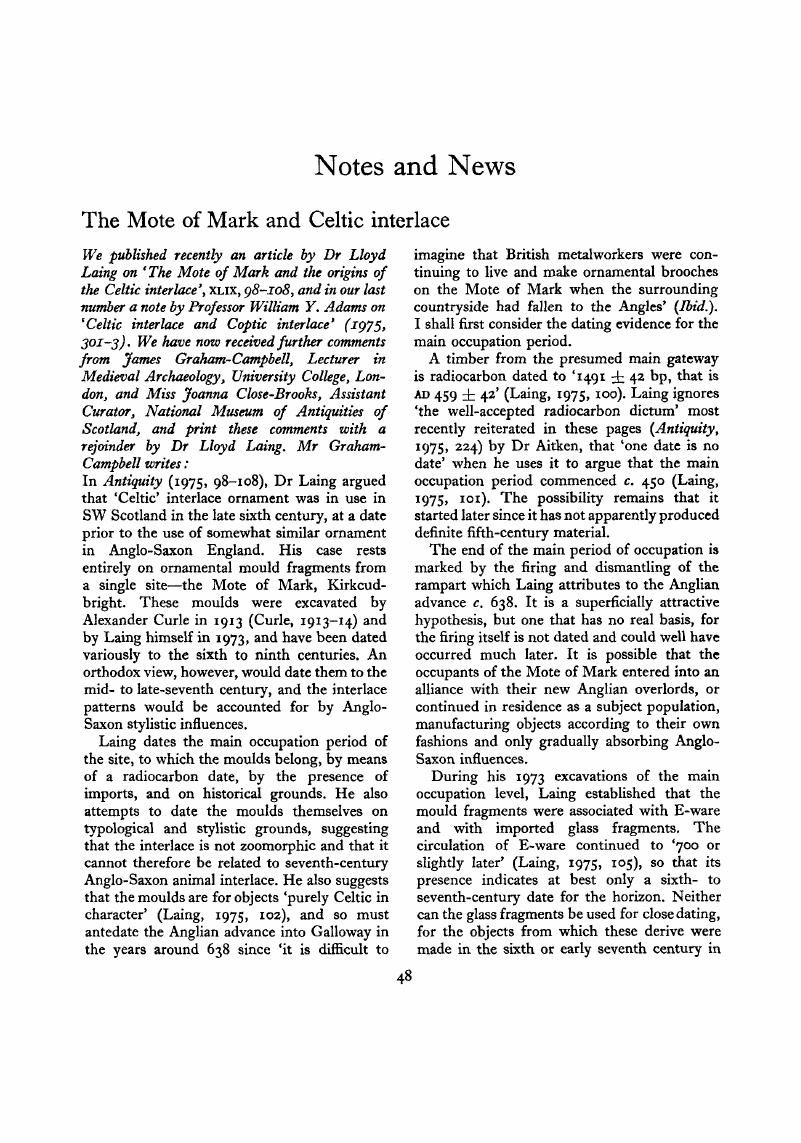Crossref Citations
This article has been cited by the following publications. This list is generated based on data provided by Crossref.
Graham-Campbell, James
1976.
Western British, Irish and Later Anglo-Saxon.
Archaeological Journal,
Vol. 133,
Issue. 1,
p.
277.



